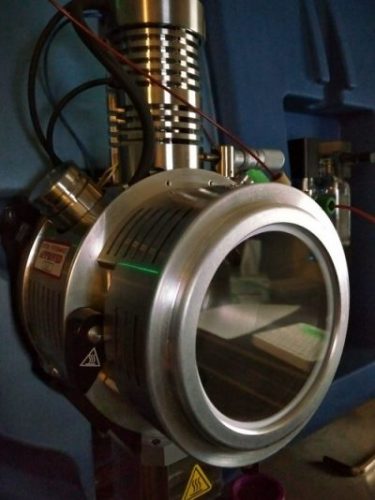
Mass Spectrometry and Chromatography Services
The AFBM has 6 state-of–the-art mass spectrometers available for the quantitative and qualitative analysis of small molecules. Small molecules encompass a wide range of compounds including amino acids, fatty acids, lipids, drugs, vitamins, hormones, peptides, neurotransmitters, and various other metabolites, biomarkers, and messenger molecules.
Our versatile instrument platforms include LC-MS/MS, GC-MS, MALDI-TOF/TOF, and IRMS, which allow us to readily develop customized methods based on individual researchers needs as well as running our more established assays.
Our sophisticated LC-MS/MS platforms combine the selective capabilities of modern chromatographic column chemistries and techniques with the sensitivity and selectivity of tandem mass spectrometry to create the gold standard of quantitative and qualitative sample analysis.
We are experienced in assaying a wide range of lipids, lipid mediators, drugs, vitamins, and other metabolites. We are also able to run the Biocrates metabolomics kits
High Performance Liquid Chromatography (HPLC) is an analytical technique to separate and quantify non-volatile compounds in a mixture. The HPLC systems in the AFBM are equipped with UV, VIS, PDA, Fluorescence and Electro-chemical detectors for the detection of various analytes including drugs, small molecules, vitamins, catecholamines, eicosanoids, nucleoside phosphates, etc.
The AFBM is equipped with a gas chromatogram with mass spectrometry (GC-MS) and flame ionization detectors (GC-FID). We are able to provide quantitative or qualitative data for volatile and semi-volatile analytes. Highly volatile analytes can be measured using a Markes thermal desorption unit with identification using the NIST library. Examples of other analytes include pentafluorobenzyl esters of long, medium, and short chain fatty acids.
Isotope ratio mass spectrometry (IRMS) is a type of mass spectrometry measuring precise differences in abundances of stable isotopes such as 2H/1H, 13C/12C, 15N/14N, and 18O/16O. The ratios of these elements are locally enriched or depleted by thermodynamic and/or kinetic processes. In addition to measuring naturally occurring isotopic ratios, IRMS can be used for tracer studies for research in metabolism. For a sample to be analyzed it must first be converted into simple gases such as H2, CO2, and N2 depending on the sample type and the isotopes of interest.
There are several ways to introduce the sample to the IRMS. lemental analysis (EA-IRMS) gives a bulk measurement of the average isotopic ratio in a sample. Sample preparation is straightforward with the sample weighed into a capsule followed by combustion in a furnace to the simple gases mentioned above. In general, the contribution of individual species to the average ratio cannot be determined by EA-IRMS. To measure the isotopic ratios of individual species, they must first be separated; gas chromatography (GC-IRMS) is ideally suited for this purpose. The sample is separated by GC then as the individual components elute off the column they are combusted to simple gases and detected by the mass spectrometer. For samples already in the gas phase the GasBench is used. The GasBench works by drawing the gaseous sample from the headspace of the sample vial. The sample is separated on a packed column prior to detection by the mass spectrometer.
At the AFBM we are able to measure carbon and nitrogen ratios by EA-IRMS, carbon ratios by GC-IRMS, and hydrogen, carbon, nitrogen, and oxygen ratios using the GasBench. Please contact us if you have questions or would like to get started with your project.
Matrix Assisted Laser Desorption Ionization Time Of Flight is a specialized form of mass spectrometry capable of ionizing and detecting molecules of a wide mass range. MALDI-TOF/TOF can be used for the rapid analysis of purified spotted samples or for 2 dimensional imaging experiments to study the relative distribution of drugs and biomolecules in various tissue types.

